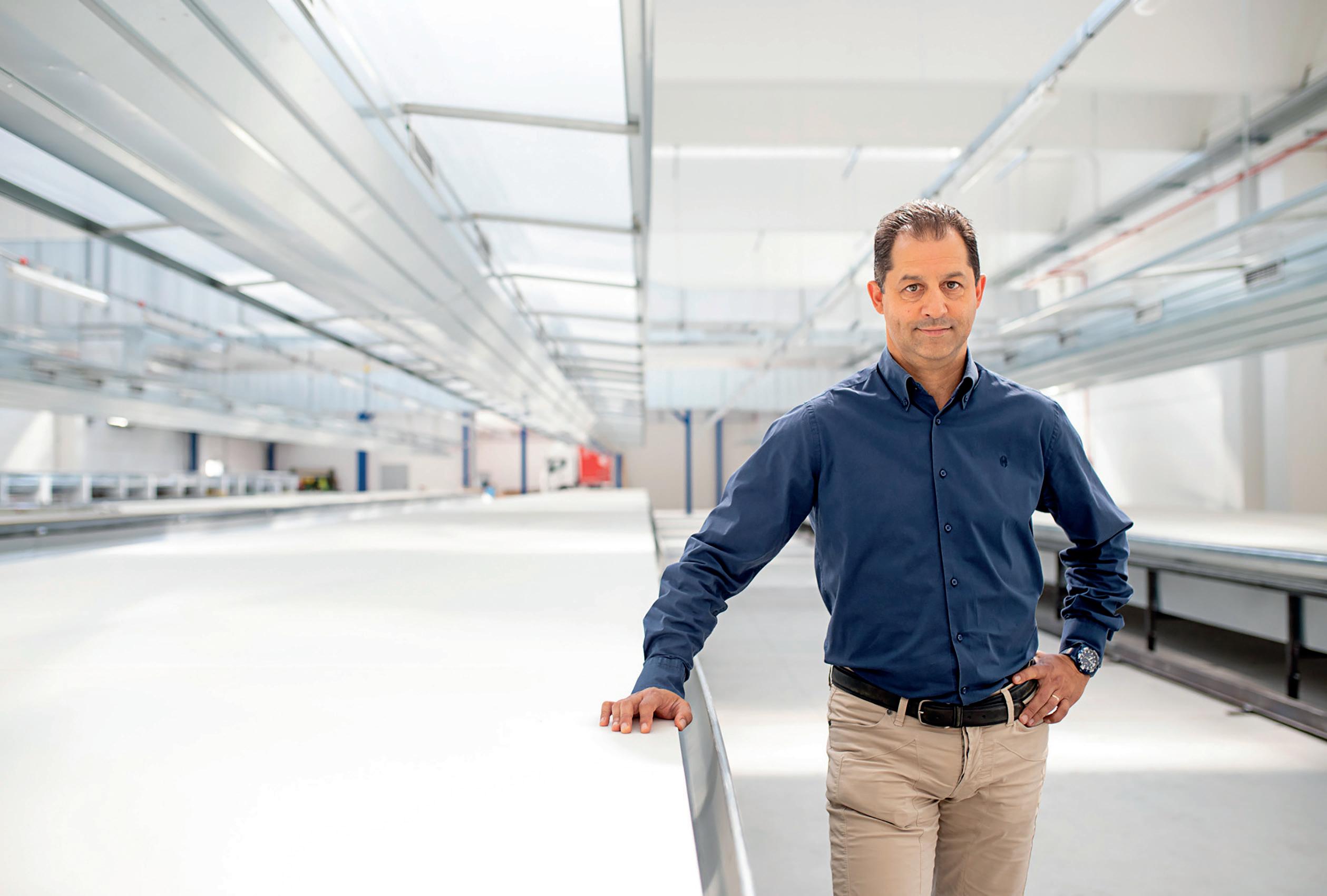
5 minute read
Vetroresina
Eight new lines to grow
Simone Colombarini
The good results achieved with the new automated lines, that were put into operation two years ago, have inspired Vetroresina S.p.A. to expand the technology to the entire plant. Tests on lightweight fibreglass sheets continue as the project progresses
Words Renato Antonini
We are living in times of great turmoil and Vetroresina S.p.A. is working hard to overcome the Covid emergency and manage the forecasted market euphoria. The commitment of the Italian company, investment-wise and in terms of changes to manufacturing systems, is the continuation of a development process that started before the health emergency and was only very briefly interrupted during the darkest days of the pandemic. Aboutcamp BtoB has been following the changes taking place since 2016 when the project to expand the main Vetroresina S.p.A. plant in Ferrara was launched. With the expansion project came more space and new production lines, in addition to changes in the implemented technology.
“We completed the construction of the new wing towards the end of 2018 and we activated the new production lines mid-2019, completing a project that took three years of hard work”, explained Simone Colombarini, president of Vetroresina S.p.A. “The end of the project marked the beginning of a new era. By implementing new technologies and preparing to increase production, we re-organised ourselves to face a developing market. And this is why we have now decided to implement the new technologies in the rest of the plant. It is an ambitious project. The investment is considerable but we are convinced that fibreglass laminates will play an increasingly dominant role in the European RV market”.
All production is automated
The production capacity of Vetroresina S.p.A. is now 6 million square metres of sheets per year, with the expansion accounting for a potential increase of 20%. There are very few fibreglass laminate manufacturers capable of achieving levels like these in the world. The new division has four production lines, each of which can produce 120-metre-long rolls. The works to modernise the remaining part of the company has already begun and the new technology is expected to be implemented in all production departments, with the only difference that the 60-metre production lines instead of the 120-metre lines of the new wing.
“We are planning to apply the new production method on another eight production lines, where 60-meter-long fibreglass reels will be made”, Simone Colombarini said. “The sheets, destined for European RV manufacturers, will be used to build the sandwich panels for the walls, roofs and floors of motorhomes and caravans. Compared to the previous one, the new technology involves the use of automated machinery with less manpower”.
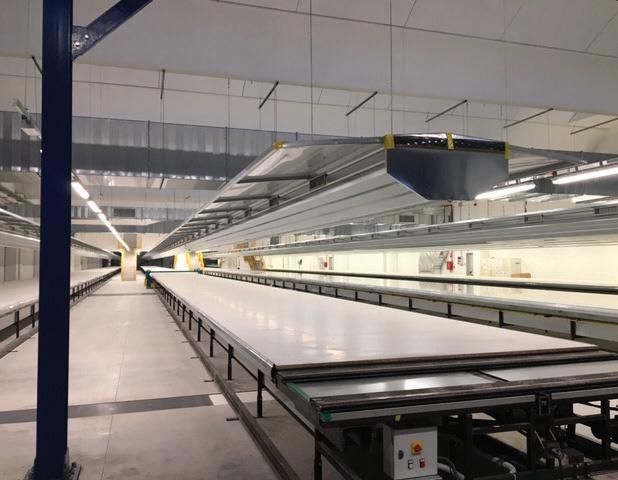
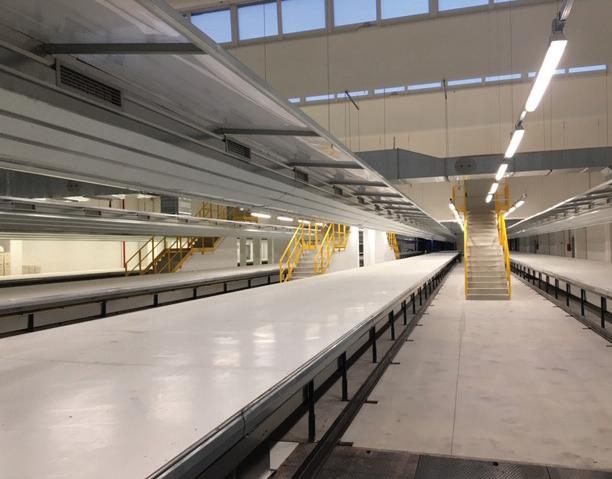
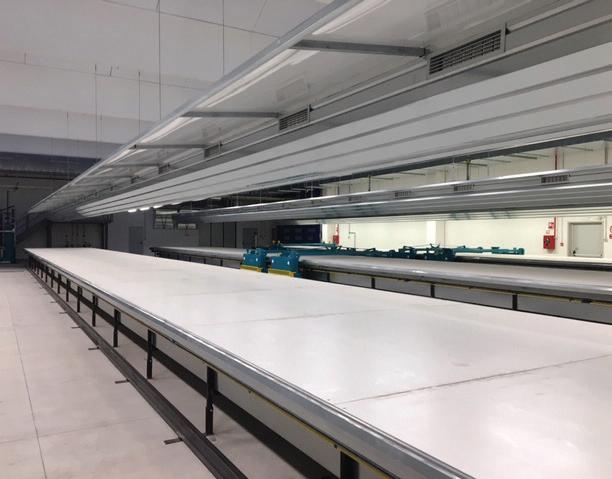
The new digitally controlled machinery will distribute the resin and gelcoat automatically, without the direct intervention of workers. In this way, the material is distributed precisely and evenly. Furthermore, a special machine is used to check the quality of the product before applying the protective coating. Although the 60-metre lines will not lead to a reduction in rejects like the 120-metre ones, the new technology will guarantee an improvement in laminate quality with uniform thicknesses and better dimensional tolerances.
Vetroresina S.p.A. sees “green”
For several years now, Vetroresina S.p.A. has been working on an ambitious fibreglass recycling project for putting material back into the production cycle and limiting the impact on the environment. To move safely and professionally in this field, Vetroresina S.p.A. has partnered up with Gees Recycling Srl based in Aviano (Pordenone, Italy) with which it has been working for some time. By acquiring 30% of the company shares, Vetroresina S.p.A. has directly entered the industrial product recycling sector with the main objective of giving new life to the fibreglass used in the RV sector. Both the processing waste from the Vetroresina S.p.A. production plant and the waste material used in vehicle construction are recycled but the goal is the massive use of fibreglass from end-of-life vehicles. The recovered material can be used to make semi-finished products (flat sheets and elements for reinforcing walls and floors) and finished products (e.g. shower trays and kitchen tops). Right now, the company is installing new presses to produce larger sheets than the current 100x220 cm ones, to be used, for instance, to make motorhome flooring.
Below: fibreglass recycling products
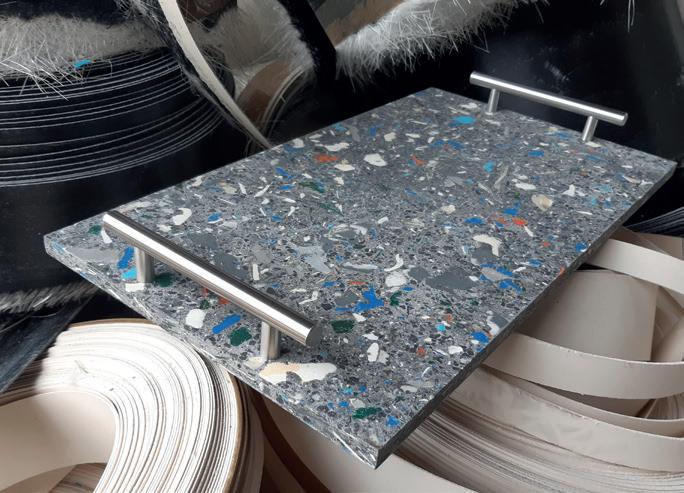

Company Profile
Founded in 1968, Vetroresina S.p.A. produces glass fibre-reinforced polyester resin laminates. The company’s great operating capacity results from thorough research in the composite materials sector linked to the study and continuous improvement of processing techniques. To maintain and increase the level of production, Vetroresina S.p.A. has planned substantial investments and thanks to the contribution of advanced technologies, as well as close collaboration with universities and experts in the sector, it has been able to apprehend the changes in and new requirements of the market. A high level of technology together with particular attention to aesthetics and materials have given rise to product diversification, extending their range and fields of application. Vetroresina S.p.A. has a production capacity of 6 million m2 / year. The main production site in Italy covers an area of 65,000 square meters, of which 36,000 are covered, and employs 140 people. In June 2000, Vetroresina S.p.A. opened a factory in Brazil, in the municipality of São Paulo, from which it can meet the needs of the South American market, and since May 2008 the company has boasted a new production site in the USA from which it can dedicate itself to managing the North American market. Around 50 people work in the American branches.
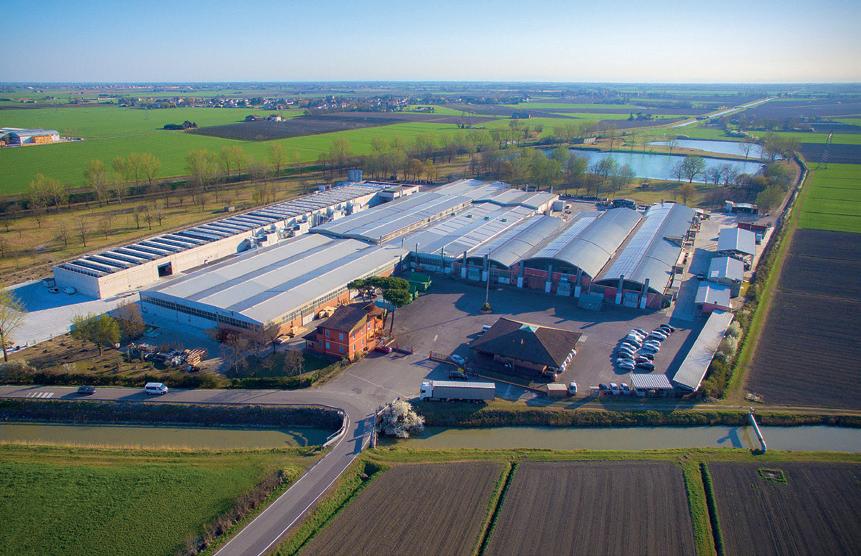
Objective lightness
In addition to the product improvement by using automated machinery, Vetroresina S.p.A. is committed to creating even lighter sheets. Considering the extensive use of fibreglass in manufacturing the living pod of motorhomes, on average about 80-100 square metres of sheets for each vehicle produced in Europe, even a minimum reduction in specific weight would have a significant impact on decreasing the vehicle gross weight. And this, of course, would be most welcomed by manufacturers, who are always forced to bow to the constraint of 3500 kilograms of gross weight to fall within the limits of a normal driving license, and indirectly also by end customers.
“We are continuing our research aimed at reducing the weight of the sheets while maintaining the same mechanical properties”, said Simone Colombarini, president of Vetroresina S.p.A. “We want to offer lighter and better performing products to our customers. We are currently carrying out tests on vehicles, using prototypes of new sheets, together with some of our customers. I believe we will be able to achieve a weight reduction of 8% for wall laminates and of even 15% for floor laminates”.










